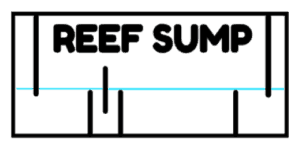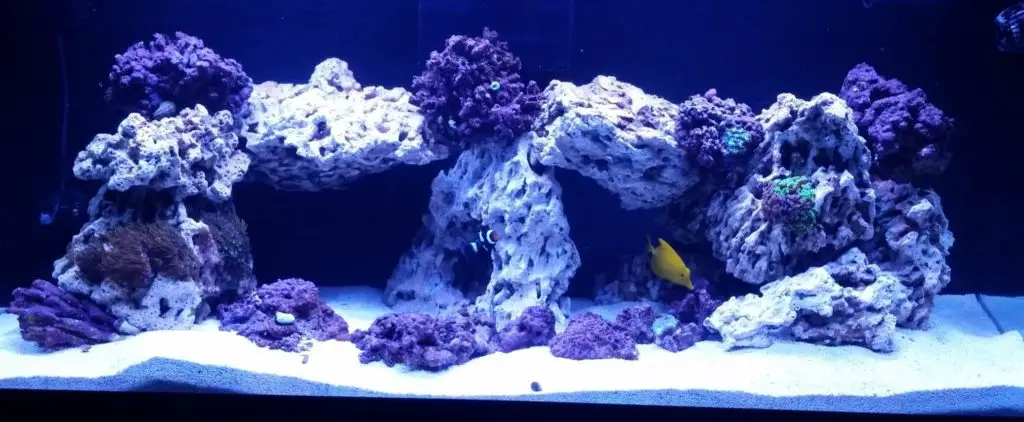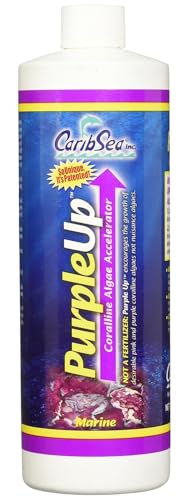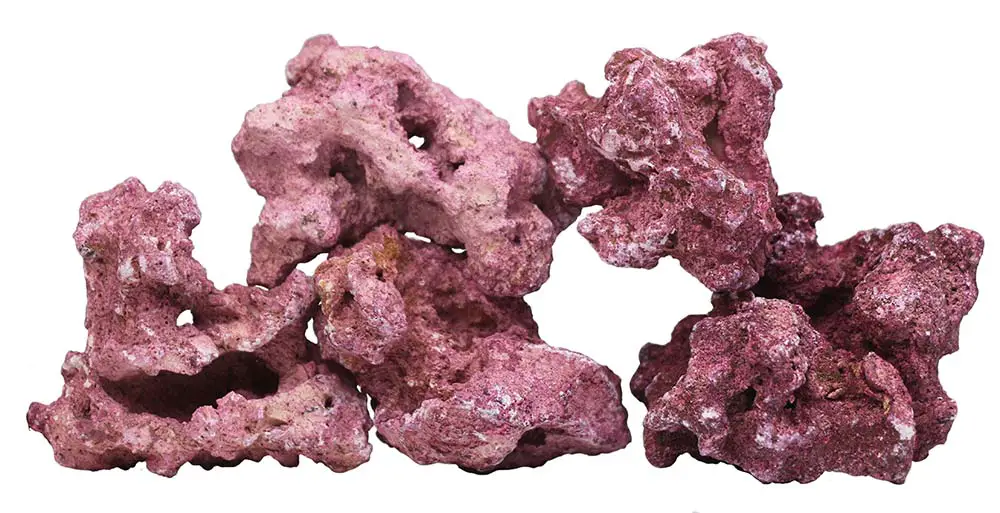
Why are Saltwater Aquarium Rocks Purple?
Have you ever looked into a beautiful saltwater aquarium and admired the amazingly vibrant colors of the coral and fish inside? Often these colors pop because of a dark background and deep purple to pinkish hue of the tank’s reef rocks. If you’ve ever wondered why the rocks are purple this article will go over what it is and why you might want it growing on your rocks and in your aquarium. Saltwater aquarium rocks are purple because of Coralline Algae growing on them.
What is Coralline Algae?
Coralline Algae as the name suggest is a type of red algae that is calciferous and typically covers rocks and other substrates. There are many types of Coraline Algae and with that comes many variations in color from reds, purples, pinks, yellows, blues, whites, grey, and even green. Coralline Algae comes in two taxonomies articulated and non-articulated corallines.
Articulated Coralline Algae are typically branching varieties. More common to the saltwater aquarium are non-articulated Coralline Algae that encrust over hard structures and substrates like rock, coral skeletons, and shells.
Coralline algae are found in many oceans around the world and exist in various depths. Coralline Algae plays an important role in the marine ecosystem. As Coralline Algae grows and calcifies across rock structures it acts like cement bonding the reef together making it strong and sturdy. Coralline Algae helps support reefs so they can withstand the barrage of waves, ocean turbulence, and ocean currents. Coralline Algae also provides a housing structure for many animals and even provides a food source for others.
How does Coralline Algae get into a Saltwater Aquarium?
Coralline Algae doesn’t naturally occur in the home marine aquarium unless the tank is started with live rock that has Coralline Algae on it. Coralline Algae has to be introduced into the aquarium. Usually, this happens automatically as various animals and other items are introduced into the aquarium. Coralline Algae grows on many hard surfaces including rocks, shells, frag plugs, and even on equipment. As the hobbyist adds these items to the tank the tank may get seeded and the algae will spread throughout the tank in the right conditions.
Is Coralline Algae Good to Have in a Saltwater Aquarium?
In general Coralline Algae is a good thing to have in your saltwater aquarium. Coralline Algae growth in a tank can signal that a tank is established and stable.
Coralline Algae is an excellent indicator species in your saltwater aquarium. Coralline Algae utilizes many of the same compounds that SPS and other corals thrive on. If you have healthy widespread Coralline Algae in your tank the probability of successfully keeping SPS coral increases. If your Coralline Algae starts to recede you may have water chemistry issues and may need to look at your water parameters.
Another benefit of having Coralline Algae in the tank is the ability for it to out-compete nuisance algae in the tank. Most nuisance algae do not grow well on Coralline Algae. When your rocks are encrusted they often will deter other algae growth and give you the nice consistent purple drape across the rock surfaces.
Can Coralline Algae be bad to Have in a Saltwater Aquarium?
Coralline Algae can come with its drawbacks. First and foremost not all reefers like the purple look to a reef tank and prefer a dry rock look or other various live rock colors and algae.
Coralline Algae even grows on glass and can grow on the back glass giving you a purple background that may not always be wanted. Another drawback is that Coralline Algae will directly compete with corals in your tank as it consumes the same water elements. With a lot of coral and Coralline Algae, you may need to look at dosing your tank as you reach a point where Coralline Algae and your corals are consuming more elements than you can replace via water changes. Coralline Algae will grow on just about any hard surface and as a result, you may find your maintenance tasks increased. Coralline Algae can grow on the glass and it can be hard to scrape off especially when it is in the corners where scrapping it could damage the silicone or topple aquascapes.
ReefSumper Recommended Maintenance Gear
Kent Marine pro-Scraper, 24-Inch
ProScrappers extendable cleaning tool is easy to adjust the handle length with a simple twist. ProScraper heads and blades are interchangeable and replaceable. Three blades are included.
Any equipment submerged in the water may also get encrusted and impact the performance of the equipment.
Cleaning a powerhead encrusted in Coralline Algae often requires a soak in vinegar before it can be removed.
Overall for me, I like the look of Coralline Algae in my tanks, and finding the right balance in the tank outweighs the negatives.
How to Seed Coralline Algae in a Saltwater Aquarium?
As stated earlier, Coralline Alage isn’t automatically in the tank and must be introduced for it to grow in the tank. There are many ways to introduce Coralline Algae to a tank and this is commonly known as “seeding” the tank in the hobby. You can seed Coralline algae with live rock, make a Coralline concoction, add animals with Coralline crusted on them, or use a pre-made product.
Seeding Coralline Algae with Live Rock
The first way is to use live rock to seed your tank. When using live rock it is often taken from the ocean and contains various algae, organisms, and even Coralline Algae. Live rock can usually be purchased from local fish stores and these may also include Coralline Algae growth on them. I usually do not like to start a new tank with live rock from the ocean or local fish stores. When you utilize live rock you never really know what hitchhikers are going to come with the rock and starting a tank off sterile is usually the best option. I like to start new tanks with dry rock that has been properly cured.
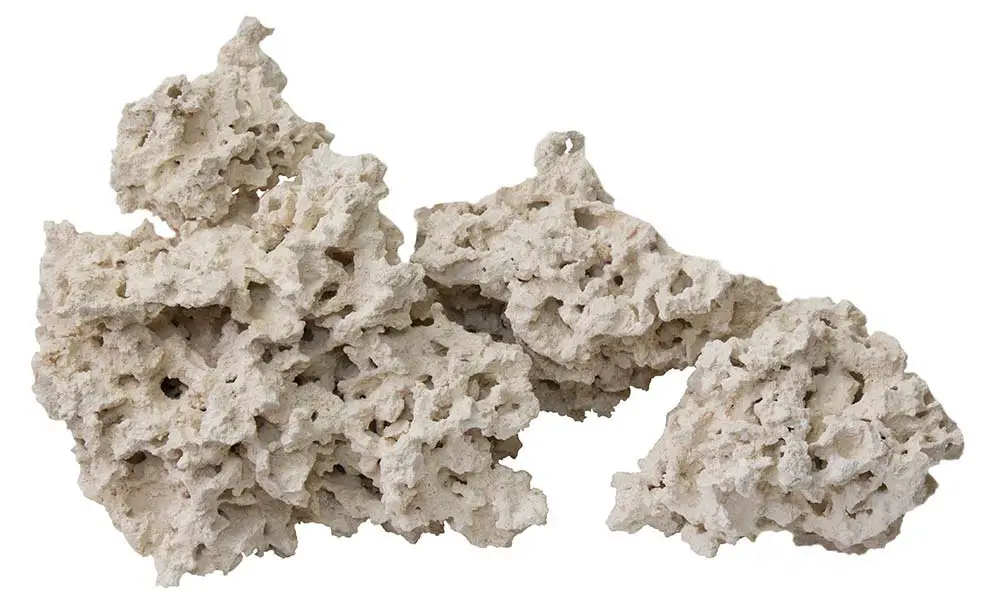
Seeding Coralline Algae with a Few Trusted Pieces of Live Rock
When I start a new tank, I like to seed the dry rock with a few pieces of Coralline Algae from one of my other aquariums where I’m fairly certain that there isn’t a pest problem in the tank. I will use a few pieces scattered throughout the aquascape. I find that with a new tank this method works very well and full coverage happens within a year.
Seeding Coralline Algae with a Coralline Algae Concoction
This method involves collecting Coralline Algae, pulverizing it with saltwater, and spreading it into the tank and on your rock aquascape. Coralline Algae grows and reproduces by spores, and taking existing Coralline Algae and processing it into a slurry will help it grow throughout the aquascape exponentially. To harvest Coralline Algae, you will need to find a good source.
Coralline Algae often likes to grow on the back walls of the tank. If you have a tank with this, a friend has a tank, or your local fish store would help you out, you can take a razor blade or glass scraper to scrape off some of the Coralline Algae off the back glass. Depending on the Coralline Algae’s growth on the glass it may come off in nice thick sheets or finer scrapings. Try to collect as much of the scrap off as possible. You can also harvest Coralline Algae from live rock by scraping it off.
Next is to process the harvested Coralline. Take some saltwater from the tank and the Coralline Algae into a container at about a 2:1 water to Coralline Algae ratio. Next use a tool like a spoon or other object to pulverize the Coralline Algae into the water like a mortar and pestle. You’ll want to work this until you have some nice fine pieces between small pea gravel down to sand size. The final step is to introduce your Coralline Algae concoction to the tank. I like to simply spread the mixture around the rock aquascape. A good old turkey baster works well for spot introducing the mixture into the rocks. You can also pour the mixture into a high flow area in your tank and let the powerheads spread the mixture for you.
Seeding with Purchased Coral or Animals
Many times a tank gets seeded through the normal introduction of coral and other livestock. Coralline algae can often be found on frags, frag plugs, and rocks that come with coral specimens added to the tank. Coralline Algae also likes to grow on common invertebrate shells. Snails, crabs, and clams added to the tank can work as a way to seed.
Seeding with a Coralline Algae Product
There are a few products on the market that can be used to seed Coralline Algae in your tank. Most of these have mixed reviews that are probably due to a combination of things.
First, if you seed your tank and the environment isn’t right it most likely will not tank hold in the tank.
Second, Coralline Algae is a living organism and these products have to be fresh and stored in an environment where the Coralline Algae spores can survive before they make it into your tank.
Coralline Algae in a Bottle company offers two kinds of Coralline strains Purple Helix and Pink Fusion. I have never tried these, but it seems to be a good option without the risk of pests getting into your tank.
Coralline Algae in a Bottle for Saltwater Aquariums, Purple Helix Strain
Unique 2 in 1 formula contains both live coralline algae spores and active nitrifying bacteria. Purple Helix, Coralline Algae in a bottle is the ONLY product developed in a laboratory containing actual live algae spores.
Coralline Algae in a Bottle for Saltwater Aquariums, Pink Fusion Strain
Contains 7 species of Coralline Algae (pink, creamy light pink, fuschia, hot pink, lavender, and magenta).These species of coralline will generally stay within these shades of pink.
How Long Does it Take Coralline Algae to grow in a Saltwater Aquarium?
Coralline Algae is considered a slow grower in saltwater aquariums and usually will take between 6-12 months to fully encrust a tank’s rocks. Coralline Algae growth rates can vary from tank to tank and will depend on the amount of seeding and stability of water parameters.
Some people reported noticeable growth within the first couple of months. With heavy seeding, I typically will see coralline colonies in various parts of the rock structure within 6 months and between 6-12 with an issue-free tank full rock coverage.
How to Ensure Coralline Algae Growth in a Saltwater Aquarium
The quickest and most effective way to ensure Coralline Algae growth in a saltwater aquarium is water parameter stability. Simply put, if you aim for the standard saltwater aquarium parameters in things like salinity, temperature, nitrates, phosphates, calcium, alkalinity, and lighting you should quick growth of Coralline algae in your tank. In the marine aquarium hobby, both time and stability are kings.
Once you’ve seeded your tank and have kept your parameters in desirable states, the next thing you can look at are supplements to increase the probability of successful Coralline growth and potentially speed up the process.
I’m more of a patient hobbyist and from what I’ve seen there are typically mixed reviews on these products, but here is a couple that may help. If you do any dosing on your tank be sure to check what you are putting into your tank so that you don’t accidentally overdose. Many of these products contain the same elements that are in dosing regimens.
CaribSea Purple up Algae Accelerator
CaribSea Purple Up Algae Accelerator
PurpleUp – uses a unique dual method approach to coralline algae acceleration. It contains ionic calcium; which immediately raises dissolved calcium levels in your aquarium water.
Red Sea KH Coralline Grow
Red Sea KH Coralline Gro Supplement
To promote coralline algae in fish only or soft coral aquariums the alkalinity needs to be maintained at approximately 3 meq/L ( 8.4 °dKH ) and specific minor and trace elements need to be readily available.
Keep your parameters in good ranges seed your tank, and in no time your rocks will purple up. Purple rocks in an aquarium to me are aesthetically appealing and serve as a barometer for keeping corals including SPS varieties.
